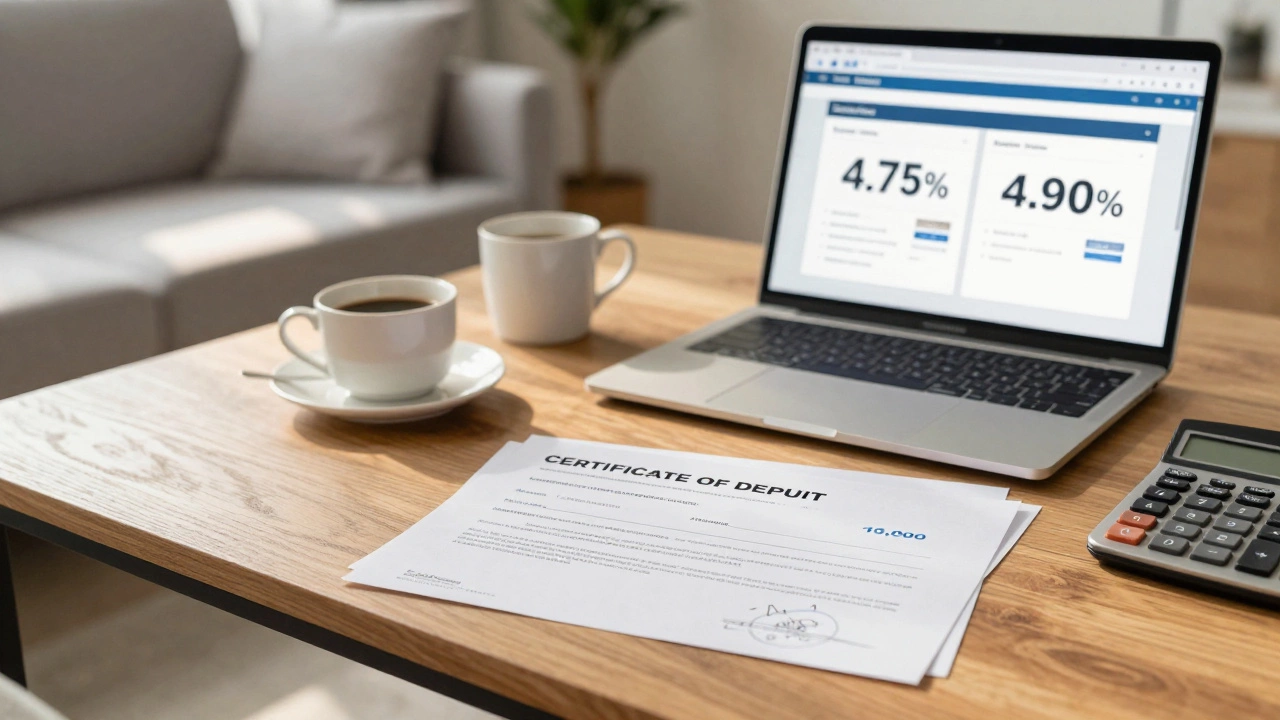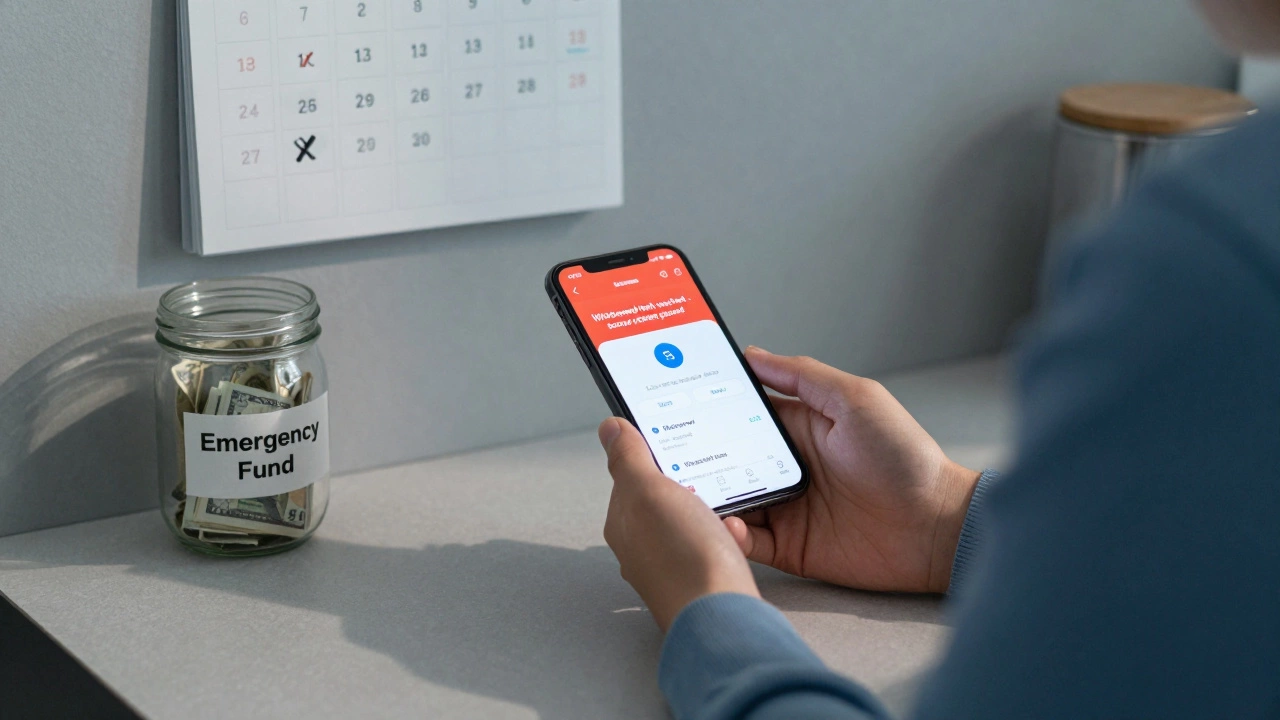Looking for a place to park your cash without the stress of stock market swings? A good savings account can give you a safety net, a little extra interest, and the flexibility to reach your goals. In this guide we’ll break down the key things you need to know – from high‑yield accounts that pay more, to ISAs that keep your earnings tax‑free, and practical tips on how much to keep on hand.
Most banks offer a standard savings account with a low rate, often under 1%. These are fine for an emergency fund or for money you need quick access to. High‑yield accounts, however, push rates up to 4%‑7% depending on the provider and the product. The catch? They may require a minimum balance, limit the number of withdrawals, or only exist online.
Start by comparing the Annual Percentage Yield (APY). The higher the APY, the more you earn on the same balance. Use a simple calculator: if you put £5,000 in a 5% APY account, you’ll see about £250 in interest after one year, assuming no withdrawals. That’s a nice boost without any risk.
Don’t forget fees. Some high‑yield accounts charge a monthly maintenance fee if you dip below a certain threshold. Those fees can wipe out the extra interest you thought you were gaining. Look for “no‑fee” options or make sure your balance stays above the required level.
Individual Savings Accounts (ISAs) are the UK’s answer to tax‑free saving. The government lets you put a set amount into an ISA each tax year – £20,000 for 2024‑25 – and any interest you earn is free from income tax. There are several types: Cash ISA, Stocks & Shares ISA, Lifetime ISA, and Innovative Finance ISA. For most people who just want a safe place to grow cash, a Cash ISA works best.
Eligibility is simple: you must be 16 or older for a Cash ISA, and you need to be a UK resident. If you move abroad, you can keep the ISA but you can’t add more money while you’re a non‑resident. That’s why it’s a good idea to max out your allowance before any long‑term move.
When comparing ISAs, treat the interest rate just like any other savings account, but remember the tax advantage. A 3% Cash ISA can feel like a 4% regular account once you factor in the tax saved on the interest.
Safety matters too. Most ISAs are covered by the Financial Services Compensation Scheme (FSCS) up to £85,000 per bank, so your money is protected if the provider fails. That’s the same protection you get with a regular savings account.
Now, how much cash should you keep in a savings account? Financial planners usually recommend three to six months of living expenses in a liquid account – that’s your emergency fund. Anything beyond that can be moved into higher‑yield options or even a longer‑term ISA to boost returns.
Putting a fixed amount each month, like £300, can turn into a solid nest egg over time thanks to compounding. Use a quick online calculator: £300 saved monthly at 4% interest will cross the £10,000 mark in just over three years.
Bottom line: start with a no‑fee, high‑APY savings account for your short‑term needs, then shift extra cash into a Cash ISA to lock in tax‑free growth. Keep an eye on fees, stay within the FSCS limit, and review rates every few months – banks often change offers. With these steps, you’ll make your money work harder without taking on extra risk.

A $10,000 CD in 2025 earns about $475 in interest over a year at current rates. Learn how CD yields compare to savings accounts, where to find the best rates, and how to avoid common mistakes.

Withdrawing from a savings account doesn’t erase earned interest, but it can cost you future earnings-especially if you break withdrawal limits. Learn how interest works and how to keep earning more.

Learn how Australian savers can combine high‑yield accounts, term deposits, credit unions, P2P lending and low‑cost funds to target a 10% annual return while keeping risk low.

Explore top alternatives to a traditional savings account in Australia, compare yields, risk, and liquidity, and learn how to choose and switch to the best option for 2025.

Yes, 7% CDs exist-but they’re rare, capped, and full of fine print. See what’s real in 2025, how to qualify, and smart alternatives like T‑bills and I Bonds.

Do ISAs still exist in the UK? We break down the reality in 2025, including rules, limits, who can benefit, and if they're worth it for your savings.

Curious how much $1000 makes in a savings account in a year? This deep-dive explains different rates, what can boost your earnings, and how compounding works.

Find out if non-UK citizens can open an ISA, who qualifies, and tips for expats or overseas hopefuls looking to save tax-free in the UK.

Thinking of moving from the UK to the US with an ISA in your name? This article breaks down what actually happens to your ISA, what you can and can't do, and the tax traps to avoid. Learn how US rules clash with UK benefits and what steps you need to protect your money. Get real-life tips that make it easier to make smart choices about your ISA. No complicated jargon, just practical stuff you should know before booking that flight.

This article breaks down exactly who can open an ISA account in the UK and what the specific rules are. You'll get clear details about age requirements, residency, and different ISA types. There's a look at common mistakes to avoid when applying, as well as tips for making the most of your allowance. If you want to make your savings work harder and avoid tax, this is for you. Everything is laid out in plain English—no jargon, no fluff.

In the hunt for a 7% interest rate on savings accounts, the UK market offers some attractive options. This article explores current offerings and strategies to maximize your savings. With tips on ISAs and how to navigate the fine print, know where you can get the best return on your money.

Is your money truly safe in an ISA? As we delve into the world of Individual Savings Accounts, we'll explore the potential risks and safety nets that these savings vehicles offer. From understanding government protections to knowing the ins and outs of different ISA types, this article aims to shed light on how secure your investments are. Discover the important tips that can help you maximize safety and returns while minimizing risks.